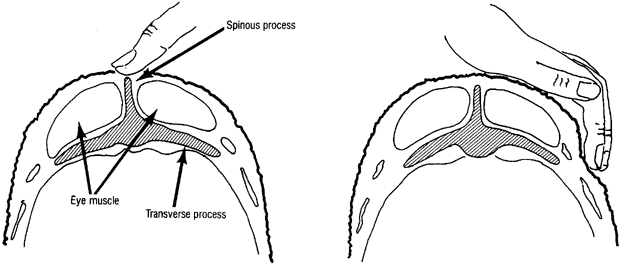
Introduction:
In order to help determine an animalís nutritional needs, the animalís body condition (amount and ratio of muscle to fat) should be evaluated. Obtaining the animalís weight will also help give a good indication if he/she is underweight or overweight. Body condition scoring is not as accurate as weighing, but it is far better than simply looking at the animal in question. Because of the wool, body condition scoring in sheep may be difficult during certain times of the year. When evaluating goats, the amount of fat under the chest (sternal fat) and over the ribs should also be evaluated. This is particularly important in dairy goats.
The accepted way to check condition is to feel the degree of muscling and fat cover over and around the vertebrae in the loin (lumbar) regions. Look for two bones: the spinous process, which is the vertical portion of the back bone; and the transverse process, which is the horizontal portion of the backbone. The table below describes the five body condition scores with reference to the spinous and transverse processes in the lumbar region:
|
Body Condition Scores |
||
| Score | Area | Condition |
| 1 (Very Low) | Spinous Process | Prominent and sharp |
| Transverse Process | Sharp, can feel underneath them and feel each process | |
| Eye Muscle | Shallow, no fat covering | |
| 2 (Low) | Spinous Process | Prominent, but smooth |
| Transverse Process | Smooth, rounded, can feel each with a little pressure | |
| Eye Muscle | Moderate, little fat covering | |
| 3 (Good Condition) | Spinous Process | Only small elevation, smooth, rounded |
| Transverse Process | Smooth, firm pressure required to feel over ends | |
| Eye Muscle | Full, moderate fat covering | |
| 4 (Fat) | Spinous Process | Can be detected with pressure as a hard line down the back |
| Transverse Process | Cannot be felt | |
| Eye Muscle | Full, thick fat covering | |
| 5 (Very Fat) | Spinous Process | Cannot be felt |
| Transverse Process | Cannot be felt | |
| Eye Muscle | Very full, very thick fat covering; may be lumpy over tail and rump | |